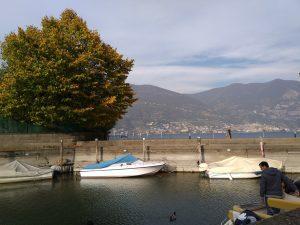Mediterranean Editors and Translators’ annual conference was held in beautiful Brescia, Italy, from 24 to 26 October. The METM events are always organized in spectacular non-mainstream locations with lovely restaurants and local wines available nearby. The atmosphere is kept intimate by limiting the number of participants to circa 150. There is a great demand for this type of peer-to-peer support system in English – this year’s conference was sold out in just a few days!
The translator or editor’s role in the writing process is first and foremost a matter of negotiation, as John Linnegar of SENSE pointed out in his workshop “It needs only a light edit”. I wasn’t able to participate this one due to an overlap, but my colleagues have been kind to share their impressions. To avoid disappointments, confusion and bad customer experience, the differences between light, medium and heavy editing need to be negotiated with the client case by case. My colleague Julie Uusinarkaus of NEaT later presented a next step in the process, negotiating a client-specific style sheet. Her point was to show how editing can add value to academic author support, but a style sheet or a style guide will work with any type of customer. I share a client with Julie, with whom we use a style guide that supports their communication purpose, visual identity and forward-thinking approach.
Italian to English transcreator Michael Farrel talked about “the conspicuous translator” asking if it’s the translator’s moral duty to “stick out like a sore thumb” in other words to point out possible faults in a source text. Authors do make mistakes, and sometimes these mistakes or illogicalities escape the eye of the copy editor. The translator is the next deep reader who usually notices them quite easily. All of the authors I have been in contact with have been grateful for help and made corrections in the original if possible. So would I be if it happened to me. Professor Rowena Murray’s (University of the West of Scotland) insights into the writing process based on writing retreats were also very valuable. Procrastination is a common ailment, and it’s empowering to hear that we all, despite status and position, often suffer from it. The most important thing is to take little steps to get going. Just a couple of sentences is always better than not writing at all. For once I was lucky and won Rowena’s book Writing in Social Spaces: A social processes approach to academic writing in a draw. The book is available on Amazon.
As the current chair of NEaT, METM17 was an invaluable opportunity for me to meet the representatives of our sister organizations as well as possible future contributors. For my personal professional interest, I participated in “Translating for the Art World”, a workshop by Laura Bennet of Culture Translation. Through carefully selected background reading, an inspiring introduction and hands-on translation assignments from Italian, Spanish and French (none of which are my working languages, but I seemed to understand the subject matter anyway) into English, we learned the many text types used in the art field. These include exhibition labels, artwork descriptions, audio tours, artist biographies and articles for high-profile publications. In Laura’s words, art translation can often be deceptively complex and wide-ranging, touching on other fields, such as politics, literature and philosophy. The variety of text types and end users demands flexibility, creativity and accuracy from the translator. I also very much enjoyed MET chair Anne Murray’s explanation of her client mapping project. I’m very much looking forward to METM18 that will be held in Girona, Catalonia.


